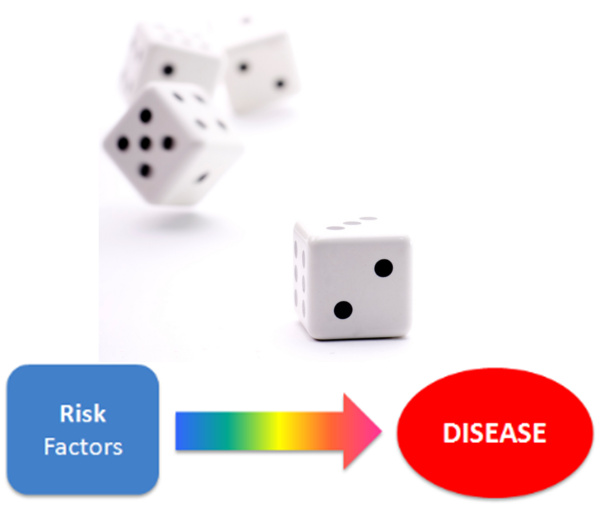Determining your risk level for a disease or condition is important because health care in medicine and dentistry is not onesize fits all. If you are at high risk for a problem you will likely receive different advice for preventive or treatment care, than if you are at low risk. Knowing your risk level helps you get the right care at the right time. This can save you time and cost, and help ensure your health and well-being.
Risk is the chance that something that you don’t want to happen will. Risk can be described using words like common, rare, high risk, moderate risk and low risk. Risk can also be described by numbers in several quite different ways including 30% (probability), 30 in 100 (frequency), 1 to 6 (odds), and 5 times more likely (relative risk). A common problem with words and numbers is that neither is understood precisely the same by each individual. Furthermore, each individual uniquely perceives what risk including the severity of possible consequences means to him or her. This makes it very difficult to explain risk in a way that each patient can understand how it relates to their unique situation. Hence it is very important for you as the patient to discuss with your dentist what your risk means to you.
Determining what your risk level is for any disease or condition helps determine what the best preventive or treatment measures should be. Risk is used to determine what can be done to prevent happening what you don’t want to happen. There are two ways that this is done. First, risk factors are the reasons why something happens. So when you don’t want something to happen you need to act on the causative reason. For example, some risk factors for tooth decay are poor oral hygiene, frequent sugar exposures, and low fluoride exposures. Second, risk level indicates how easily and quickly you can get tooth decay or gum disease. Example, if your risk level for tooth decay is high, it is because you have many risk factors for tooth decay and you are far more likely to develop new decay than someone at low risk.
Now to match risk level with treatment or prevention strategies. People at high risk for tooth decay need to see their dentist more frequently, up to three or four times per year for exams, and will receive different care such as fluoride treatments or sealants. People at low risk for tooth decay and gum disease may only need to be seen once a year or even longer. However, risk level to prevent tooth decay and gum disease is not the only reason that is used to determine how often you should see your dentist. Other reasons include your desire to have your teeth professionally cleaned, to receive cosmetic services, or to check on any fillings or false teeth that you are concerned about. Your dentist can help you determine your risk and appropriate frequency of exam.
